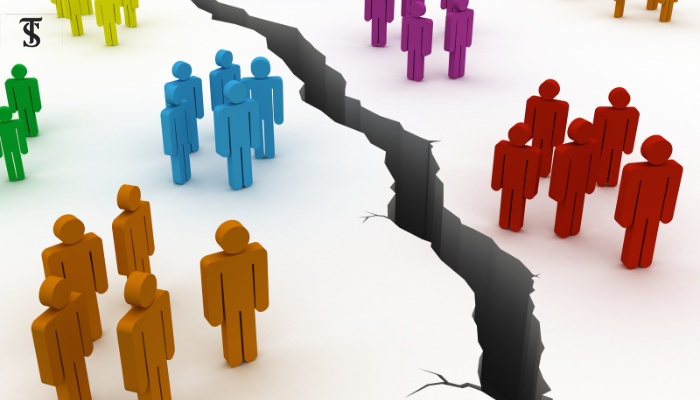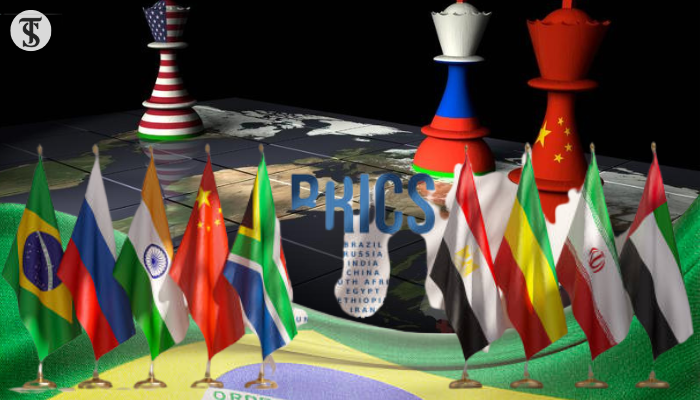How Elites Weaponize Social Polarization

“The first requisite for the progress of a nation is the brotherhood and unity among sections of society,” aptly noted Sir Syed Ahmad Khan. Yet, one must ask whether elites truly share this vision. In fact, across the globe, powerful groups often do the opposite: deliberately dividing people along ethnic, religious, economic, and racial lines to consolidate power, win popular support, and divert attention from pressing issues. By stoking these divisions, they advance agendas ranging from expanding control and promoting populist rhetoric to manufacturing consent for wars and conflicts.
To appreciate how this works, it helps to understand that social polarization describes the growing separation of society into opposing camps—typically defined by class, ideology, or identity—which undermines cooperation and tolerance. In parallel, elitism denotes the concentration of wealth, status, and political influence in a small segment of society. When these two forces combine, they create a potent mechanism for elites to protect their privileges: dividing people ensures they remain distracted and fragmented, rather than united against those at the top.
Moreover, history offers stark examples of polarization as a tool of control. The British Empire’s “divide-and-rule” policy in colonial India deliberately pitted communities against one another to prevent unified resistance, thereby preserving imperial dominance. Similarly, modern political figures frequently deploy populist rhetoric to pit “the people” against scapegoated minorities or foreign actors, exploiting public grievances rather than addressing the root causes of inequality. Recent campaigns in the United States and India demonstrate how leaders can stoke fear of immigrants or religious minorities to galvanize support without meaningful policy solutions.
Furthermore, elites often manufacture communal tensions to distract from systemic failures. As Niccolò Machiavelli advised, “Never try to win by force what can be won by deception.” For instance, political campaigns that dramatize immigrant-related conflicts can shift focus away from stagnating wages, inadequate healthcare, or dysfunctional governance, while garnering emotional support from segments of the electorate.
In addition, the digital era has given elites new tools for electoral manipulation. By funneling data into algorithm-driven echo chambers, they can tailor messages that deepen divisions and secure votes. The Cambridge Analytica scandal, in which personal data from millions of Facebook users influenced high-profile campaigns, illustrates how information technology can be weaponized to polarize societies and tilt elections.
Likewise, polarization has long been used to rally public support for military ventures. Nazi Germany’s anti-Semitic propaganda, which portrayed Jews as a dire threat to the “Aryan” nation, paved the way for widespread acceptance of war and genocide. By declaring one group responsible for societal ills, elites can justify violence while suppressing dissent.
Additionally, corporate interests exploit polarization to shield unsustainable practices—especially in climate policy. Fossil-fuel companies fund misleading research and amplify conspiracy theories such as “climate change is a hoax” or “it’s just a natural cycle,” fragmenting public opinion and delaying urgent environmental reforms that would threaten their profits.
Similarly, neoliberal economic elites preserve their status by trapping vulnerable populations in cycles of debt. Structural adjustment programs imposed by institutions like the IMF and World Bank often require austerity measures that deepen poverty and erode trust in government, fueling resentment and further polarizing societies along class lines.
Equally important is the role of media control in manufacturing consent. Dominant news outlets, owned by corporate and political elites, curate information to serve elite interests rather than the public good. For example, extensive coverage of the Ukrainian crisis and the promotion of sanctions—while underreporting humanitarian crises in Gaza—reveals how news narratives can skew global perceptions and deepen divisions.
From a philosophical standpoint, Karl Marx’s concept of the superstructure helps explain these dynamics. Elites construct institutions—government, religion, culture, and law—to protect their capital, tweaking these structures whenever class conflict threatens their dominance. Social polarization thus becomes one of many strategies to suppress united resistance and maintain the status quo.
Pakistan’s own history exemplifies elite-driven polarization on a grand scale. During the Soviet–Afghan War, the U.S.–Pakistan alliance under General Zia-ul-Haq harnessed anti-communist sentiment and funded religious schools to strengthen geopolitical leverage. While this coalition achieved its Cold War objectives, it also laid the groundwork for extremist militancy—an outcome that continues to destabilize the region.
Consequently, elite-driven polarization begets social unrest, political instability, hate crimes, and weakened democracies worldwide. Economic stagnation follows, as fractured societies struggle to collaborate on solutions. To counter these threats, it is imperative to foster critical thinking, promote inclusive dialogue, and regulate media to function as a genuine watchdog rather than an attack dog. Education that cultivates tolerance, legal frameworks against hate speech and misinformation, and robust civil-society engagement can rebuild unity and safeguard democratic values. By confronting polarization head-on, societies can reclaim common purpose and resist the divisive tactics of those who seek to profit from their division.

Muqaddas Hanif
The writer is a Biological Sciences student with a passion for public service.





